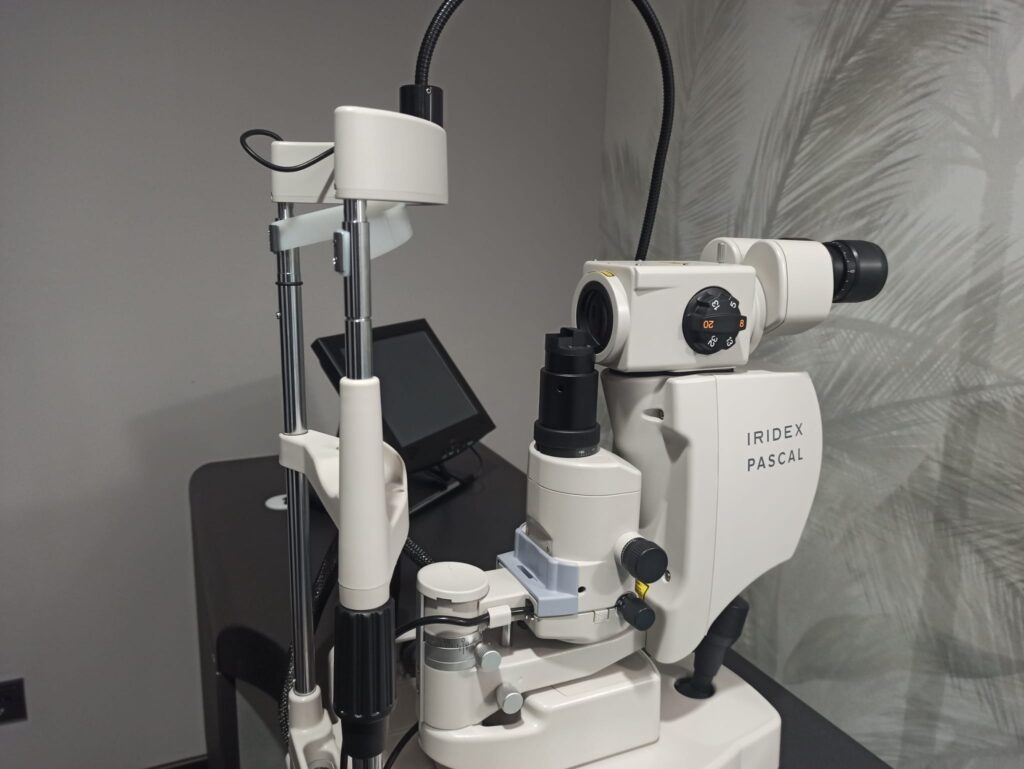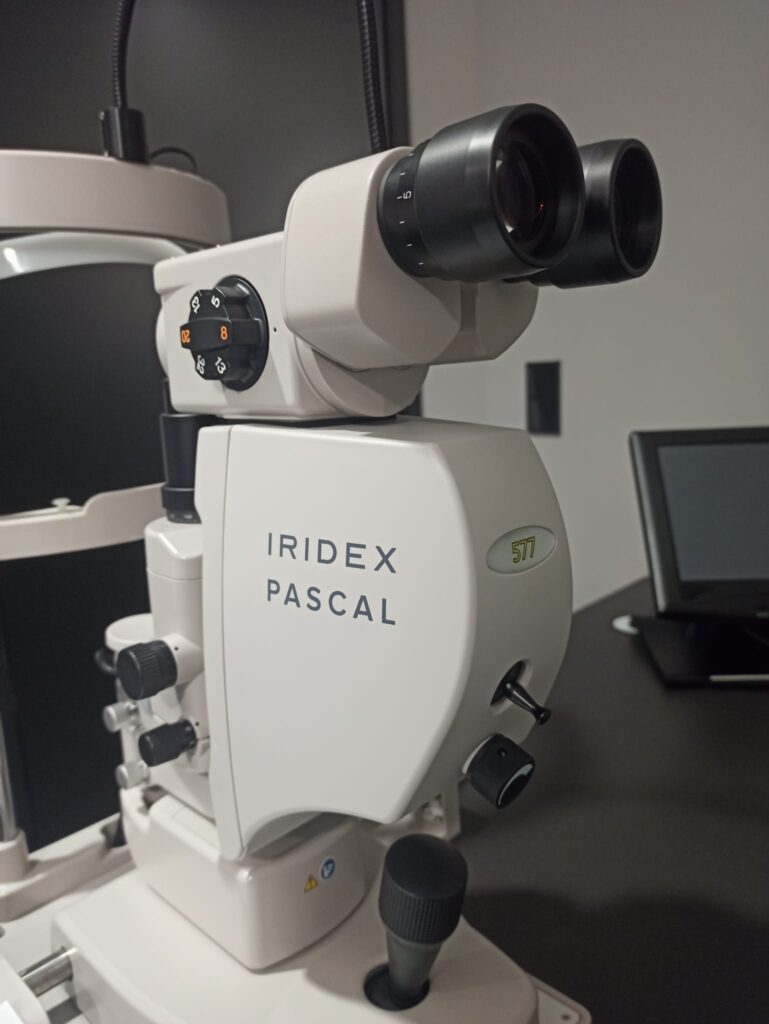A retinal laser is a special laser – in our case a state-of-the-art PASCAL laser – to treat various diseases of the back of the eye.
It can be used, for example, to treat retinal holes, non-perfused retinal areas after vascular occlusion or advanced diabetic changes. The PASCAL laser offers us the possibility of the most painless and gentle treatment possible with only a few necessary appointments. We can precisely adjust the intensity and number of laser foci required and adapt them individually to your findings.

The laser technique is based on the effect of photocoagulation. In this process, the absorption of light generated by the retinal laser in the target tissues produces a tiny localized increase in temperature. This causes the diseased tissue to die. For retinal holes, individual small dots are created around the defect with the laser. These function like small “spot welds”. The heat effect of the laser thus creates mini-scars around the hole and stabilizes the retina at the edges around the defect. Thus, the retinal defect cannot tear further.
Before a retinal laser, we numb your eye locally and dilate the pupil with eye drops. We then position a contact lens on the surface of your eye. Now the laser treatment takes place. Retinal laser treatment is performed on an outpatient basis and usually takes about 10 to 20 minutes. Multiple appointments are often necessary when treating diabetic retinal changes.

Since your pupil must be dilated with eye drops for the laser treatment, you must not drive for approximately four hours after the treatment. Otherwise, you can go about your daily life as normal.
Do you already know our driving service? You are welcome to have us pick you up and bring you back home.
The eye may be red or irritated after retinal laser treatment. In this case, we will prescribe anti-inflammatory eye drops. In rare cases, lens opacification, an increase in intraocular pressure, or the formation of epiretinal gliosis may occur after treatment. Good aftercare is therefore very important and is a top priority at BeyondEye.
We use micropulse laser therapy in the context of chronic retinopathia centralis serosa. This disease causes fluid retention under the retina and pathological changes in the retinal pigment epithelium.
Micropulse laser therapy consists of extremely short laser pulses (a few nanoseconds long) that follow each other with short interruptions. In this way, we achieve that the effect of the laser occurs almost exclusively at the level of the retinal pigment epithelium. The remaining retinal layers are spared to the maximum. Laser therapy achieves the reduction of inflammatory processes and the formation of harmful fluid accumulation. The fluid already present can then be gradually broken down by the healthy cells of the back of the eye.
You can make an appointment by phone at 0221 / 87 10 50 or simply choose your preferred date online.